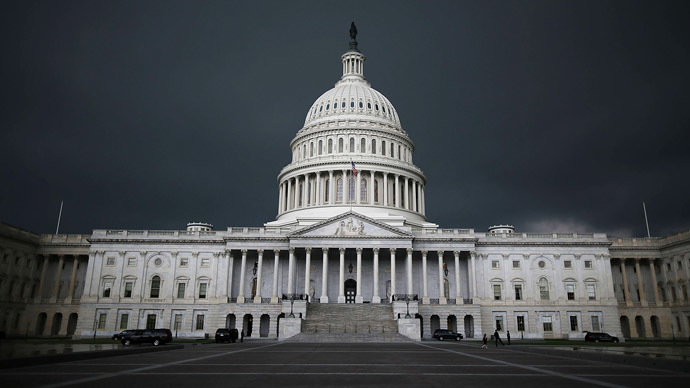RT
September 29, 2013
 With the US debt ballooning to a new record of $16.7tln and the deadline to fix the ‘debt ceiling’ expiring on October 1, a default threat looms over the world’s largest economy. Experts agree the government will broaden its borrowing limit.
With the US debt ballooning to a new record of $16.7tln and the deadline to fix the ‘debt ceiling’ expiring on October 1, a default threat looms over the world’s largest economy. Experts agree the government will broaden its borrowing limit.
The latest warning to Congress comes from the International Monetary Fund, who urged the US Congress to reach an agreement to raise its debt ceiling and avoid a federal government shutdown.
“This is important for the continuation of the recovery in the US and beyond that in the global economy,” IMF spokesman Gerry Rice told reporters in Washington DC Thursday.
As of September 25, the US Treasury reported its federal debt at $16,699,396,000,000.00 in their daily treasury statement, a figure which has been reported for 130 days straight, situating spending about $25 billion shy of the legal limit of $16,699,421,095,673.60.
Treasury Secretary Jacob Lew calculated the US would run out of money by October 17 and have less than $30 billion cash in hand if Congress fails to pass its spending bill by October 1, when the new fiscal year starts.
If the US authorities don’t agree to raise its ‘debt ceiling’- the maximum amount of money the US can borrow – the country will need to admit it can’t pay its bills. While a default of the world’s biggest economy is highly unlikely in practice, in theory it would result in the deepest crisis ever, Igor Nikolaev, director of the strategic analysis department at PKF, a Moscow-based auditing firm, told RT in an interview.
“Should the US default, global trading will come to a halt, with absolute uncertainty hanging over the global economy,” said Nikolaev.
Regardless of the depth of the US debt abyss, the country has never officially violated its ‘debt ceiling’, that’s been in place for almost a century. And that’s simply because the country’s policymakers have always raised the affordable limitations, insisting it was legal.
“The United States can pay any debt it has, because we can always print money to do that. So there is zero probability of default,” Alan Greenspan said on NBC’s ‘Meet the Press’ in August.
In another argument, experts say the Federal Reserve itself is the second biggest holder of US public debt, which means it can easily relieve the overall burden on the part it holds.
The US most recently raised the debt ceiling to $16.699 trillion in May 2013, keeping the economy a safe distance from the so-called ‘fiscal cliff’.
“The country needs to smell smoke to make the country do something about their massive debt. Maybe when the ratio of their debt to GDP nears 100 percent, they’ll start thinking over the ways to cut the burden,” said Nikolaev.
 Daily Stormer The Most Censored Publication in History
Daily Stormer The Most Censored Publication in History


